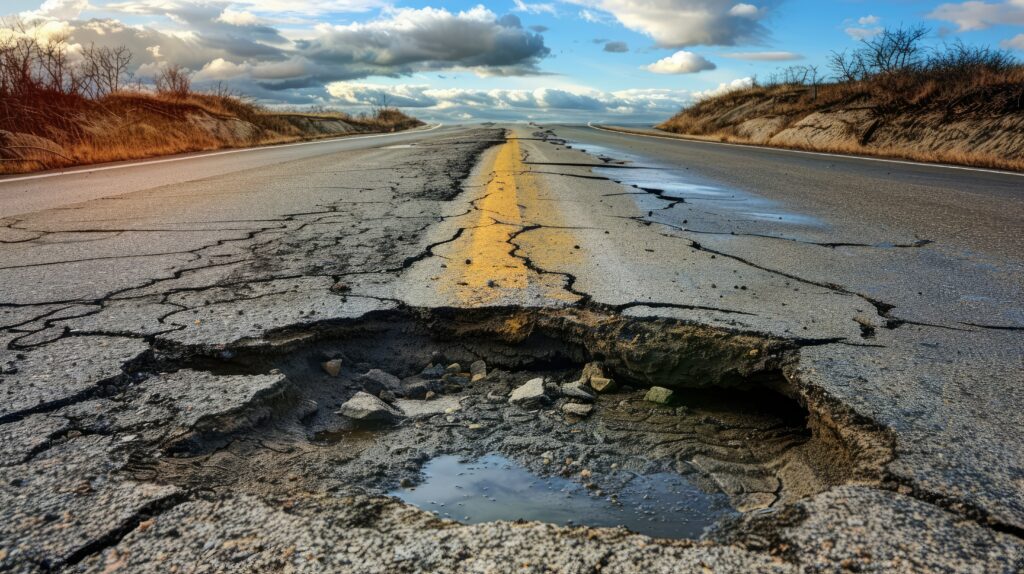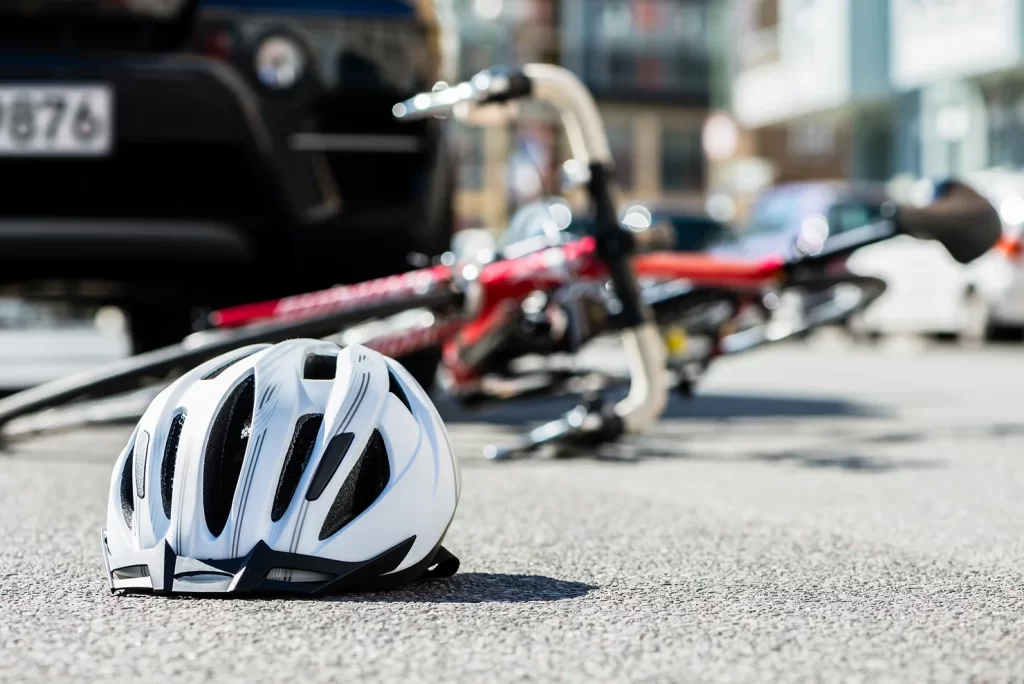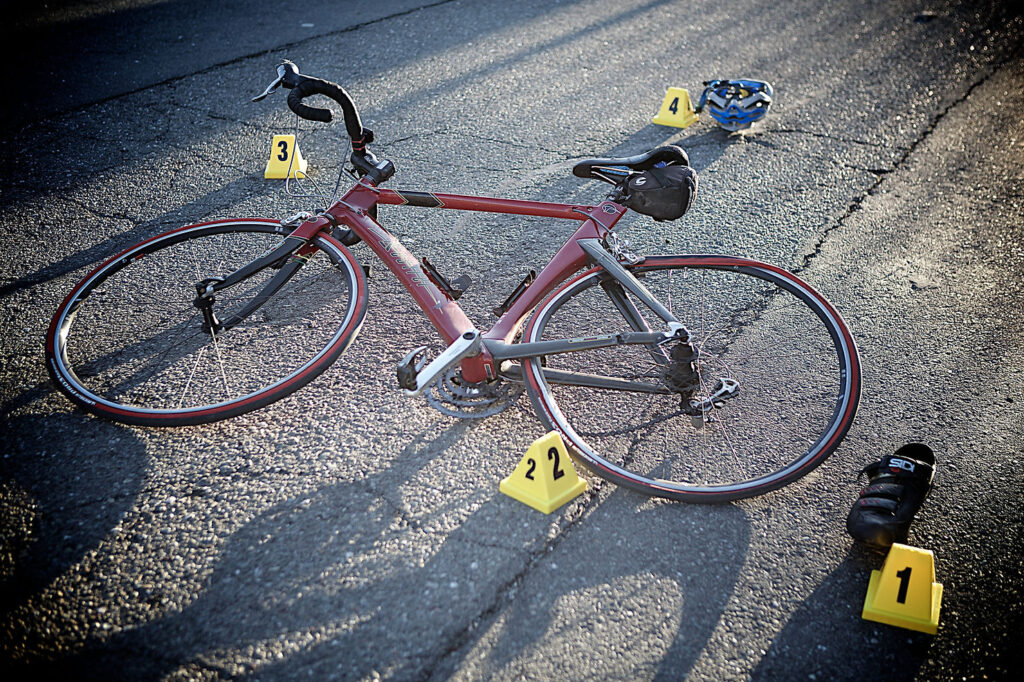Distracted Driving and Cyclists: Risks and Safety Tips for Urban Riders

Distracted driving injures cyclists more often than you might think. With the rise of texting and other distractions, distracted driving injures cyclists, putting them at increasing risk. This article will cover the impact of distracted driving on cyclists, the common causes of these distractions, and essential safety tips for urban riders. Additionally, we will discuss the importance of bicycle safety through educational initiatives that teach essential traffic laws and safe riding practices. Key Takeaways Distracted driving significantly increases the risks of bicycle accidents, with cyclists being particularly vulnerable due to their lack of protection. Everyday activities such as phone use, eating, and adjusting the radio contribute to distracted driving, leading to various types of dangerous incidents involving cyclists. Infrastructure improvements, public awareness campaigns, and vigilant riding practices are crucial for enhancing cyclist safety against distracted driving. Understanding Distracted Driving Distracted driving is a serious issue that affects road safety, particularly for vulnerable road users like bicyclists. It is defined as any activity that diverts a driver’s attention away from the task of driving. Common distractions include: Using a cell phone or other electronic device while driving Eating or drinking while driving Talking to passengers or engaging in conversations with other drivers Adjusting the radio, climate control, or other vehicle settings Grooming or personal hygiene while driving Reading or looking at maps or other materials while driving Engaging in any other activity that takes a driver’s eyes off the road or hands off the wheel Distracted driving can lead to accidents, injuries, and fatalities. According to the National Highway Traffic Safety Administration (NHTSA), distracted driving was responsible for 3,308 deaths in motor vehicle crashes in 2022. Bicyclists are particularly vulnerable to distracted drivers due to their smaller footprint and less protective barrier compared to cars. This makes it crucial for drivers to maintain their focus on the road and avoid any activities that could divert their attention. The Impact of Distracted Driving on Cyclists Bicycle injuries and fatalities have become a pressing issue on American roads. In 2022, distracted driving claimed 3,308 lives, and cyclists are particularly vulnerable due to their smaller footprint and lack of protection. Traffic safety facts highlight that distracted driving is a leading cause of accidents, with severe consequences for all road users. The trend of fatalities among cyclists due to distracted driving is on the rise, making up an increasing share of cycling-related deaths, including distracted driving related fatalities. This isn’t just about numbers; these statistics represent real lives lost and families devastated by preventable accidents. The rise in distracted driving poses a severe threat to all road users, but cyclists bear the brunt of this danger. With 83.5% of bicycle fatalities from distracted driving being male in 2022, it’s clear that certain demographics are more at risk. Cyclists accounted for 3% of all deaths on roads that year, a sobering figure that underscores the need for immediate action. Distracted driving is a growing danger on the roads. It poses a significant threat to overall road safety. Cyclists must constantly be on high alert, as distracted drivers significantly increase the risk of accidents. Whether it’s due to texting, eating, or simply not paying attention, the chances of a collision escalate when a driver’s focus is anywhere but on the road. In urban areas with high traffic volume, this danger is amplified, making it crucial for cyclists to adopt defensive riding techniques and remain vigilant. Common Causes of Driver Distractions Distracted driving encompasses any activity that diverts a driver’s attention from driving. The National Highway Traffic Safety Administration (NHTSA) defines it as engaging in activities like using a technological device or other inattentive behaviors. One of the most notorious distractions is cell phone use, which accounts for 18.6% of distracted driving-related crashes. Texting, in particular, is exceedingly dangerous, as it can divert attention from the road for about five seconds, enough time to cover the length of a football field at 55 mph. Distracted driving laws aim to address these dangerous behaviors. Before: However, it’s not just cell phones that are the culprits. Everyday activities such as adjusting the radio, eating, drinking, and even personal grooming while driving fall under inattentive or careless driving. These activities might seem harmless but can lead to significant lapses in attention and increased reaction times, making it difficult to respond to sudden changes in traffic or the presence of cyclists. After: Everyday activities that contribute to inattentive or careless driving include: Adjusting the radio Eating Drinking Personal grooming These activities might seem harmless but can lead to significant lapses in attention and increased reaction times, making it difficult to respond to sudden changes in traffic or the presence of cyclists. The cognitive distractions are perhaps the most insidious. These occur when a driver’s mind wanders away from the task of driving. Daydreaming, being deep in thought, or dealing with emotional stress can all lead to a dangerous reduction in a driver’s attention. Recognizing these distractions highlights the importance of maintaining a focus on driving to prevent accidents. Types of Bicycle Accidents Involving Distracted Drivers The types of bicycle accidents involving distracted drivers are varied, each presenting unique dangers to cyclists. One common scenario is when distracted drivers fail to yield the right of way at intersections. Intersections are particularly hazardous for cyclists, as drivers may be preoccupied with their devices or other distractions, leading to catastrophic collisions. Bike paths are also relevant locations for accidents involving pedestrians and cyclists, contributing to a broader understanding of traffic safety. Analyzing crash data from the Fatality Analysis Reporting System (FARS) helps identify these critical areas. Another frequent type of accident occurs when drivers turn left into the path of a cyclist. This can happen when the driver is distracted and doesn’t see the cyclist approaching. Similarly, right-hand turns can be perilous, as drivers may ignore cyclists with the right of way and turn into their path. Distraction and reduced reaction time often cause these accidents, leading to severe consequences for cyclists. Another significant
Cycling Accidents in 2024: Key Trends and Safety Tips

Cycling accidents have been a growing concern, with approximately 850 reported bicyclist fatalities occurring annually in the U.S. This represents a significant increase, with bicyclist deaths rising by 42.7% since 2010. The trend has shown no signs of slowing down, highlighting the urgent need for improved bicycle safety measures, especially as bicyclist deaths occurred. Additionally, the total traffic fatalities provide a broader context, showing the overall severity of road safety issues and the need for comprehensive safety strategies.
Rising Toll: Bikers Killed Every Year and How to Improve Safety

In 2022, 1,105 bikers were killed every year while bicycling. This article looks at the statistics, major causes, and ways to improve biker safety, particularly in light of the alarming number of bikers killed every year. Key Takeaways Bicyclist fatalities reached a record high of 1,105 in 2022, highlighting a troubling upward trend since 2010. Motor vehicle collisions, particularly with light trucks, are the leading cause of cyclist deaths, with urban areas accounting for 83% of fatalities. Implementing safety measures such as improved infrastructure, helmet usage, and community engagement are crucial to reducing cyclist fatalities and enhancing overall safety. The increase in people bicycling for commuting and recreation has highlighted the need for improved safety measures. Annual Statistics of Bikers Killed by Fatal Injuries The numbers paint a sobering picture. In 2022, 1,105 bicyclists lost their lives in motor vehicle accidents, the highest recorded fatalities ever. This figure is part of a troubling trend. Bicyclist fatalities have shown a steady increase since 2010, peaking at 966 in 2021. The previous high before 2022 was 1,003, underscoring a consistent upward trajectory. These statistics are more than just numbers; they represent lives cut short and families devastated. In 2021 alone, bicyclists were involved in 2.2% of all traffic fatalities, a stark reminder of the vulnerability of those on two wheels. The average age of cyclists killed in these accidents was 49 years, indicating that this is not just an issue affecting young or inexperienced riders. According to data from the U.S. Census Bureau, the percentage of U.S. workers who travel to work by bicycle has shown fluctuations over the years, indicating changing trends in bicycling habits. The available data from the past decade calls for action. With increased urbanization and more people riding bicycles, the need for improved safety measures is pressing. The rise in fatalities highlights the urgent requirement for comprehensive strategies to protect cyclists. Common Causes of Fatal Bicycle Accidents Understanding the common causes of fatal bicycle accidents is crucial for developing effective prevention strategies. Collisions with motor vehicles often result in severe injuries or fatalities, frequently due to driver distraction, improper lane changes, or failure to yield. Cyclists face heightened risks in urban areas, where traffic density and congestion increase the likelihood of accidents. Additionally, helmet usage plays a crucial role in preventing fatal injuries. Each of these factors uniquely contributes to the overall risk profile for cyclists. Motor Vehicle Collisions Motor vehicle collisions are the leading cause of cyclist fatalities, with light trucks being particularly dangerous. In 2021, light trucks were responsible for 46% of bicyclist deaths. The sheer size and weight disparity between bicycles and motor vehicles put cyclists at a significant disadvantage, often leading to severe injuries or fatalities in the event of a crash. The statistics underline the need for improved safety measures to protect a cyclist injured from motor vehicle collisions. Driver distraction, fatigue, and improper lane changes commonly contribute to these tragic incidents. It’s clear that addressing these issues requires a multifaceted approach, including better driver education and stricter enforcement of traffic laws. Urban Area Risks Urban areas pose significant risks for cyclists, with a staggering 83% of cyclist fatalities occurring in these environments. The higher volume of traffic and congestion in cities contributes to increased rates of fatal bicycle injuries. In 2021, urban areas saw around 85% of bicyclist fatalities, up from 69% in 2011, highlighting a growing problem. The high traffic density and frequent interactions between vehicles and cyclists in urban settings create a dangerous environment. Enhancing urban infrastructure and reducing traffic congestion can significantly improve cyclist safety. Helmet Usage Helmet usage is crucial in preventing fatal injuries in bicycle accidents. Wearing a helmet can reduce the risk of severe head injuries by up to 73%. Despite this, data shows that 62% of bicyclists killed in 2022 were not wearing helmets, underscoring the importance of this simple yet effective measure. Helmets provide essential head protection, significantly decreasing the severity of injuries in a crash. Encouraging more cyclists to wear helmets could dramatically reduce fatalities and serious injuries. Risk Factors for Cyclists Several risk factors contribute to the high rate of cyclist fatalities. Most fatal crashes occur during dawn, dusk, or nighttime, accounting for 56% of all cases. Poor visibility during these times increases the risk. Additionally, adverse weather conditions can impair a cyclist’s control and decrease visibility, making it crucial to adapt speed and use reflective gear. Implementing safety measures like proper bike maintenance and wearing protective gear can significantly lower the chances of accidents and fatalities. Enhancing street lighting and ensuring cyclists are visible to drivers are crucial steps in reducing these risks. Impact of Speed Limits on Bicycle Safety Speed limits play a crucial role in bicycle safety. Reducing average vehicle speeds can lead to significantly fewer bicycle accidents and less severe injuries. A motor vehicle traveling at 25 mph poses a lower risk of serious injury to cyclists compared to one at 40 mph. Effective speed management strategies, such as lowering slower speed limits and implementing automated speed enforcement, can enhance safety for cyclists. The design of public roadways can also be modified to naturally calm traffic, further enhancing safety for cyclists. Reducing speed limits in busy areas can create safer environments that encourage more cycling and walking. Legal Aspects and Compensation for Families Families of cyclists killed in accidents have legal options to seek compensation. A wrongful death claim can cover funeral costs and the loss of financial support from the deceased. Compensation in bicycle accident lawsuits can also include medical expenses, lost income, pain and suffering, and property damages. Consulting a personal injury attorney can help victims and their families navigate the legal process and secure fair compensation. The clarity of fault in an accident significantly influences the potential settlement amount. Safety Measures to Reduce Fatalities Implementing safety measures is crucial to reducing cyclist fatalities. Adverse weather and lack of adequate safety equipment significantly raise the injury risk for cyclists in crashes. The following subsections
Cyclist Tragically Killed in Car Crash in Point Loma

A recent fatal accident in Point Loma tragically claimed the life of a 70-year-old cyclist. The collision occurred when a 92-year-old driver made a left turn at the intersection of Canon and Evergreen Streets, striking the cyclist. Despite the immediate response of emergency services, the cyclist was pronounced dead at the scene. This incident has reignited concerns about the safety of vulnerable road users, particularly in high-traffic areas like Point Loma, where cyclists frequently navigate dangerous intersections. Bicycle fatalities in California are a significant concern, with the state ranking among the highest in the nation for cycling deaths. In 2021 alone, 125 bicyclists were killed in motor vehicle crashes across California, accounting for 2.9% of the state’s total motor vehicle fatalities. San Diego County, where Point Loma is located, reported 16 cyclist deaths in 2021, making it one of the top five counties in the state for such incidents. The primary causes of fatal bike crashes include unsafe speed, improper turns, and failure to yield the right of way, highlighting the critical need for better infrastructure and awareness campaigns to improve cyclist safety. While efforts have been made to improve road safety, including expanding bike lanes and enforcing traffic regulations, these measures have not been enough to prevent fatalities. Advocacy groups continue to push for more protective measures for cyclists, such as stricter speed limits in residential areas and improved signage at dangerous intersections, as seen in Point Loma. This tragic case, combined with the alarming statistics, emphasizes the urgent need for both cyclists and motorists to exercise greater caution and for cities to invest more in infrastructure that can protect the lives of cyclists. Our deepest sympathies go out to the family our our lost brother.
Navigating Roadway Hazard Claims: A Step-by-Step Guide for Injured Cyclists in California

Attorneys specializing in dangerous roadway condition bicycle crashes- Lawyers 4 Cyclists
Bicycle Accidents in Southern Orange County

Did you know that Orange County has seen a significant increase in bicycle accidents, with thousands of crashes and numerous fatalities reported in recent years? This startling fact sheds light on the importance of understanding and addressing the issue of bicycle accidents in Orange County. In this blog post, we will write an optimized blog about bicycle accident in Orange County, exploring the reality of bicycle accidents, safety measures, legal rights and responsibilities, and practical tips for cyclists to prevent accidents and stay safe on the road. Short Summary READ MORE
Tips for Handling a Bicycle Accident in Orange County, CA

How to Handle a Bicycle Accident in Orange County Handling a bicycle accident in Orange County involves gathering evidence at the scene, seeking medical attention, and hiring an experienced bicycle accident attorney. By taking these steps, injured cyclists can ensure that they receive proper treatment and support, as well as secure the compensation they deserve for their injuries and damages. It is important to act quickly after a bicycle accident to ensure that all evidence is collected. Gathering Evidence at the Scene Collecting evidence at the scene of a bicycle accident can be crucial for building a strong case. If you are involved in a bicycle accident, it is important to: This information will help support your case and ensure that you have all the necessary details for any legal proceedings. In addition to collecting this information, you should also: These steps can be essential for building a strong case and securing the compensation you deserve. Seeking Medical Attention Seeking medical attention after a bicycle accident is essential for documenting injuries and ensuring proper treatment and recovery. Even if your injuries appear minor, it is important to be evaluated by a healthcare professional, as some injuries may not be immediately apparent. After receiving treatment, be sure to follow any prescribed treatment plans and attend follow-up appointments as needed. Retaining records of all medical appointments, diagnoses, treatments received, and medications prescribed can be invaluable in supporting your case and securing compensation for your injuries. Hiring an Experienced Bicycle Accident Attorney Hiring an experienced bicycle accident attorney can help victims in the following ways: Consulting with a specialized lawyer for bicycle accidents, such as Lawyers 4 Cyclists, is vital to make sure your legal rights are defended and that you obtain the reimbursement you deserve. It also ensures you have all necessary information about your legal options. By engaging the services of an attorney who specializes in bicycle accident cases, you can ensure that your rights are protected and that you receive the support and resources necessary to recover from your injuries and move forward with your life. Summary In summary, bicycle accidents in Orange County are a serious concern that requires attention from both cyclists and drivers. By understanding the risks, implementing safety measures, and knowing their legal rights and responsibilities, cyclists can reduce their chances of being involved in an accident and ensure their safety on the road. Whether you are a cyclist or a driver, we all share the responsibility of creating a safer environment for everyone on the road. Together, we can make a difference and reduce the number of bicycle accidents in Orange County.
Lawyers 4 Cyclists Founder, Steve Rosen, Featured on CBS News Report on E-Bike Safety

2 On Your Side: Orange County Sees Spike In E-Bike Accidents Founder of Lawyers for Cyclists was recently interviewed on CBS2 as an authority on e-bike injuries and safety. “…The amount of growth we’ve seen in accidents, and specifically catastrophic injuries related to e-bikes, is steadily on the rise,” said Steve Rosen. Rosen says many of his clients treated e-bikes as they would traditional bicycles. “I think people mistakenly believe that e-bikes are just like any bicycle,” Rosen said. “‘I am just getting on a bike. I am going to ride it like I have since I was 4-years-old.’ It’s not. It’s more akin to a motorcycle or mopeds we used to have.” For full story, go here.


